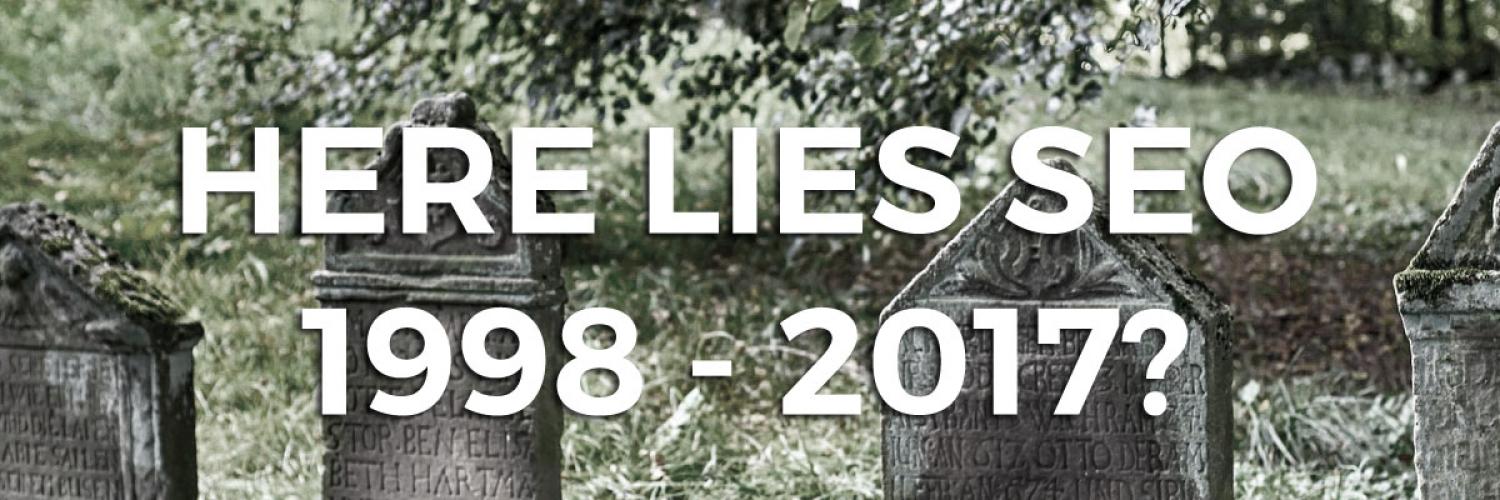
Note: SEO means “Search Engine Optimization” and is an umbrella term that roughly translates to creating a strategy to improve your search engine (ex. Google) ranking.
I like to read articles from a variety of different sources on a variety of different topics. Whenever I read up on SEO and scroll down to the conversation section, I can always find the inevitable comment “does this mean that SEO is dead????”.
This has been a pattern for at least a decade and over the years. I’m guilty of undervaluing SEO as well. I too have told clients not to focus on SEO. I too have told clients that SEO is not that important.
The truth is more nuanced though. In the last twelve months, I have been returning to SEO as part of their marketing strategies and advising my clients slightly differently.
How Other Companies Approach SEO
When most companies approach SEO, they approach it from one side only: “you can rank on the first page for [generic] keywords x”.
This approach is simply wrong. With the underlying goal to get ranked for certain keywords, you are going to build content and strategies to game the system. This is a terrible idea.
Take a step back to think about Google as a company. Google’s mission statement (from 1998) is to “organize the world's information and make it universally accessible and useful”. Think about what the means to them. That means that they want to index and rank first the websites that are the most useful when searching for something.
If your strategy is to “trick” Google into giving you a better ranking without providing any real value, you are not going to stay well-ranked for long. Google has millions to spend on the best and brightest engineers in the world to make sure their search results are relevant. I don’t care how good an SEO guy is, he’s not going to be able to compete against that.
A More Nuanced Approach
SEO is still not the focus for our programming or marketing strategy, however, it does play a role. The approach we take is to understand that SEO is just one tool in a larger toolbox. A single puzzle piece in a larger picture that looks incomplete without it.
So why is this shift in perspective important?
Instead of focusing on where our clients rank for certain keywords, we focus on building their brand. We make sure that they have multiple ways to reach out to new and existing customers. We make sure that their site is technically proficient to meet Google’s optimization guidelines.
In short, we are not trying to game the system, we are trying to follow best-practice. And don’t get me wrong this is hard to do. It is a lot of extremely technical work that is boring and nuanced. No single activity is worth very much on its own but they all come together, Google sees that you’ve taken the time to fix the small details to make their life easier.
If your code and server infrastructure are well thought out and well run, Google “rewards” you by increasing your ranking. If you are providing useful content that is accessible (think back to their mission statement), they will reward you even further. If people recognize your brand and search for you by name, Google takes this into account when providing vetted sources of information.
So, What is Drive’s Secret?
Simply put, we do a better job for two reasons: we have better technology and we don’t cut corners.
The Drive Framework has been programmed to be concerned about SEO and, in particular, URL routing since before it had the name Drive. This is something that has been a background feature of our system for projects dating back almost ten years (when online marketing was still in its infancy).
Our framework provides us with a strong starting point to further refine the custom code for each client. Being an office that’s full of programmers, we pride ourselves on writing clean, scalable, maintainable code for our clients (even when they don’t see it). We enjoy tinkering with our tech and are constantly making new improvements to our underlying system.
We also put a lot of work into our projects that other firms simply don’t. When we check our technical work, we also make sure we take into account Google’s best practices, Site Speed recommendations, W3C standards, schema formatting, and Open Graph standards. We submit our sides to Google Webmasters and check everything over. We do a lot of boring work that other firms simply don’t bother with.
And our clients appreciate this attention to detail. When I first started I would take on small budgets and always put way too much work into each project. Over time, I learned that there are clients in the market place that understand and appreciate the importance of handling the technology side properly and are willing to pay for the work to be done well.
Today, when we take on clients, we make our recommendations and don’t shy away from proper budgets. By being more selective about our clients, we have been able to do a better job and get properly paid to expand our team to turn projects around even faster.
In Conclusion
So while SEO is not dead, the old way of understanding SEO is dying. As it should be. SEO was never meant to be a stand-alone marketing strategy and should never be implemented this way.
Our approach is to focus on all the things touching on SEO without trying to game the system in any way. In short, we apply best practices instead of SEO.


